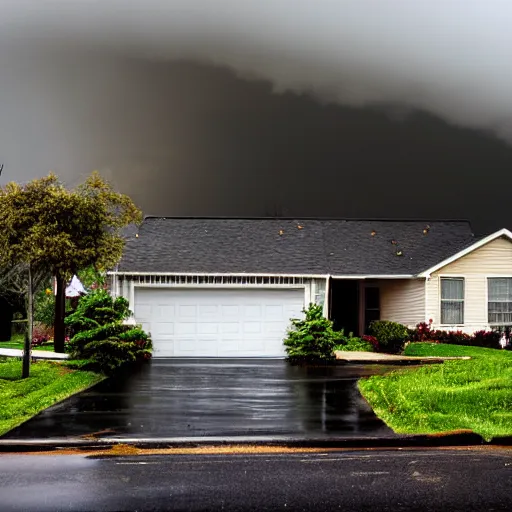What Time of Year is Best to Replace a Roof?
When it comes to replacing a roof, it is best to do it during the warmer months like spring or summer. This way, the materials will set properly and there is less risk of bad weather interfering with the installation.
It's important to wait for a time when the weather is dry and there are longer daylight hours to get the job done efficiently. Additionally, contractors tend to be busier during these peak seasons, so it's a good idea to schedule your roof replacement well in advance.
What time of year is best to replace a roof?
Have you ever wondered when the best time of year is to replace a roof on your home? Replacing a roof is a big investment and an important maintenance task to keep your home safe and protected. In this article, we will explore the different seasons and factors to consider when determining the ideal time to replace a roof.

Summer
Ah, summer – the season of sunshine, outdoor adventures, and maybe even a roof replacement. Summer is an ideal time to replace a roof for a few reasons. First, the warm weather allows for shingles to adhere properly to the roof surface.
Additionally, longer daylight hours provide more time for roofing contractors to work on your roof.
Pros:
- Warm weather helps shingles adhere properly
- Longer daylight hours for work
Cons:
- High demand may lead to longer wait times
- The heat can make working conditions uncomfortable
Fall
As the leaves change color and the air becomes crisp, fall can also be a good time to replace a roof. The moderate temperatures and lower humidity levels in the fall create optimal conditions for roofing projects. Plus, getting a new roof before the winter months can help protect your home from cold weather damage.
Pros:
- Moderate temperatures and lower humidity
- Preparation for winter weather
Cons:
- Fall is a popular time for roofing projects, so scheduling may be tricky
- Cold snaps can interrupt work

Winter
While winter may not seem like an ideal time for a roof replacement, it can still be done under the right circumstances. In regions with milder winters, such as in the southern United States, roof replacements can be completed year-round.
However, in areas with heavy snowfall and freezing temperatures, it is best to avoid replacing a roof during the winter months.
Pros:
- More availability from roofing contractors
- Potential off-season discounts
Cons:
- Intense weather conditions may delay or complicate the project
- Safety risks for workers due to ice and snow
Spring
Springtime brings blooming flowers, warmer weather, and the perfect opportunity to replace your roof. As the snow melts and the temperatures rise, spring provides a prime window for roofing projects. The mild weather and lower humidity levels in the spring make it an ideal time to complete a roof replacement.
Pros:
- Moderate temperatures and lower humidity
- Ideal conditions for roofing projects
Cons:
- Scheduling may be challenging due to high demand
- Spring showers can cause delays
Factors to Consider
When deciding on the best time of year to replace your roof, there are several key factors to keep in mind. Consider the following elements to ensure a successful and timely roofing project:
Roofing Material
Different roofing materials may have specific temperature requirements for installation. For example, asphalt shingles should not be installed in cold weather, as they may become brittle and prone to breakage. Metal roofing, on the other hand, can be installed year-round.
Weather Conditions
While mild weather is ideal for roof replacements, extreme conditions can pose challenges. Heavy rain, high winds, and snowstorms can delay or complicate roofing projects. It is important to monitor the weather forecast and choose a time when conditions are expected to be favorable.
Contractor Availability
Roofing contractors may be busier during certain times of the year, such as in the spring and fall. It is recommended to schedule your roof replacement well in advance to ensure that you can secure a spot on the contractor's calendar.
Budget Constraints
Your budget may also play a role in determining the best time to replace your roof. Some roofing companies offer discounts during off-peak seasons, such as winter, which can help you save money on your project. Consider your financial situation and explore pricing options before making a decision.
Personal Schedule
Consider your personal schedule and availability when planning a roof replacement. You may need to coordinate with the roofing contractor, take time off work, or make arrangements for children or pets during the project. Choose a time that aligns with your schedule to minimize disruptions.
Homeowners Association Rules
If you live in a community with a homeowners association (HOA), be sure to check their rules and regulations regarding roof replacements. Some HOAs may have specific requirements for roofing materials, colors, or installation procedures that you need to follow.
In conclusion, the best time of year to replace a roof depends on a variety of factors, including the season, weather conditions, roofing material, contractor availability, budget constraints, personal schedule, and homeowners association rules.
By considering these elements and planning ahead, you can ensure a successful and timely roof replacement for your home. Whether you choose summer, fall, winter, or spring, the most important thing is to prioritize the safety and protection of your home by maintaining a sturdy and reliable roof.







